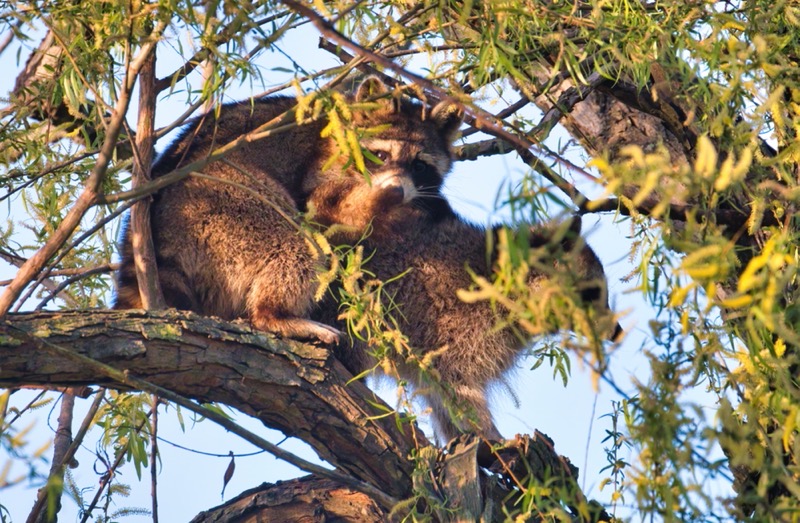While driving the auto tour road at Sequoyah National Wildlife Refuge in Oklahoma, I saw something unexpected—two raccoons mating high up in a tree. I’ve seen raccoons many times before, but I had never witnessed this kind of behavior in the wild. It wasn’t the easiest place to photograph them, but I had my Fujifilm X-T3 with a Canon EF 100-400 mm f/4.5-5.6 L IS II lens, attached using a Fringer EF-FX Pro adapter. The setup was mounted on a beanbag in the open window of my pickup. That helped steady the shot and let me get a few usable photos, despite the tricky angle and distance.

Seeing this interaction made me curious about raccoon mating habits. I did some research afterward, and here’s what I found.
Raccoon Mating Behavior
Mating Season: Raccoons breed from January through June, with peak activity in March and April. My sighting landed right in the middle of their busy season. The extended window gives them more chances to find mates and reproduce successfully.
Multiple Mates: Male raccoons are polygamous. They’ll mate with several females during a single season, boosting their chances of passing on their genes. Females usually raise the young on their own after a gestation period of around 63 days.
Noisy Behavior: Mating season isn’t quiet. Males use high-pitched whistling sounds to attract females. These calls can carry through the woods and are a good way to locate raccoons during this time. Fights between males are also common when more than one is around.
A Memorable Encounter
While I didn’t capture the sharpest image due to lighting and position, seeing this natural behavior up close was something I won’t forget. It’s the kind of moment you don’t expect but feel lucky to witness.
If you’re visiting the refuge in early spring, keep your ears open. You might hear the calls before you spot the raccoons themselves.
Technical:
- Location: Sequoyah National Wildlife Refuge (Oklahoma)
- Date and Time Taken: April 25, 2021 (07:23 A. M.)
- Aperture Priority
- Aperture: f7.1
- Shutter speed: 1/1400 (as determined by the camera)
- ISO: 3200
- Exposure Compensation: +0.67
- Focal Length: 400 mm
